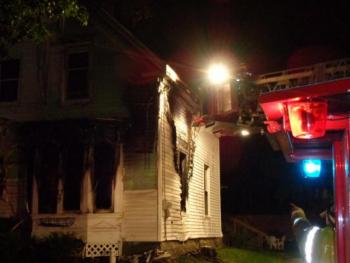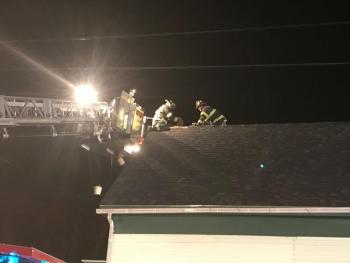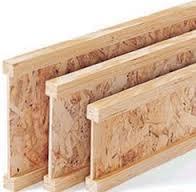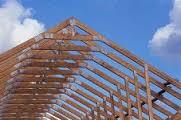Rockland asks for sprinkler systems in some new construction. Why?
ROCKLAND — It's been a long time since Midcoast firefighters have relied solely on roof support when hacking holes for ventilation. No longer do they crawl along a floor at a structure fire, ax in hand, sounding to ensure structural stability below.
Over the past 20 years, firefighters have changed the way they attack house fires. Not because of advanced firefighting equipment or chemical sprays — though those are also relevant — but because of the change in building construction and building materials.
An older home may be more susceptible to catching fire due to an aging furnace or faulty electrical wiring, according to Assistant Fire Chief Adam Miceli of the Rockland Fire Department. However, fighting fires in newer homes can be more problematic.
Clarification
Rockland City Council voted for an ordinance that Valli Geiger sponsored to roll back the requirement that every new house built further than 1,000 feet from a fire hydrant had to have a sprinkler system.
Until now, all new house construction beyond Old County Road, required a sprinkler system, now any house under 1,500 square feet of living space, can seek an exemption.
“Far from adding more barriers to building, we just peeled one back,” said Geiger, in an email. “The amendment passed on Monday night, Jan. 9, simply clarified that our intent was 1,500 square feet of living space and did not include porches or basements.”
"We're using firefighting tactics that were developed for natural-products fires on modern fires that are fueled by petroleum-based products and seeing that results are not what they used to be," Miceli said.
Because of this growing issue with modern construction materials, Rockland's fire department has been working with the city council to adhere to the Life Safety Code that has been in existence for several years.
The Life Safety Code is, according to the National Fire Protection Association, “the most widely used source for strategies to protect people based on building construction, protection, and occupancy features that minimize the effects of fire and related hazards. Unique in the field, it is the only document that covers life safety in both new and existing structures.”
Miceli anticipates that council will at least retain the Safety Code's requirement that if a builder uses the light-weight building materials, then the owner must install sprinklers. If that passes, then the only way around the sprinkler rule would be to use standard dimensional lumber in construction.
Modulars are the exemption to the rule. Those homes have separate federal requirements, according to Miceli.
Rockland’s original ordinance required all new homes be equipped with sprinklers as was indicated in the 2009 Edition of the Life Safety Code. In October of 2012 the exceptions were enacted, alleviating concerns that were expressed to the Council.
Why the new rule?
In decades past, the timber used for building homes in Maine came from tall trees, but lumber in general has been harder to come by.
In place of those sturdy beams, which are referred to as dimensional lumber, the less expensive, engineered building products have emerged.
Engineered building materials/products are less expensive because they do not require long pieces of larger wood to be grown, which takes considerable time and has been overused for so long the price has increased considerably. To further complicate the matter, even the new dimensional lumber is rarely as strong as the lumber of 50 years ago or more.
Now, through technology, the forest products industry can grow trees straighter, taller and faster. This results in the grain of the wood not being as tight. This means the same piece of dimensional lumber bought today does not have the same strength as an identical piece milled a century ago.
The older timber beams, often measuring two inches by 12 inches, used to be common for supporting roofs. But more recently, truss roofs — structurally often two-by-four beams that are adhered together with adhesives — are being used in home and commercial construction.
"If a fire gets in to that space, the truss framework is so unpredictable, and so failure prone that we can't put firefighters on the roof to cut a hole to get the smoke and heat out," Miceli said.
Some types of new flooring have been recognized as a problem, as well, according to Miceli.
Trusses and lightweight wooden I Beams are also utilized in flooring systems with the same dangers of rapid structural failure when exposed to heat and fire.
Newly constructed wooden I joists are made from with a plywood web that runs the length of the joist and is supported from bowing by laminated wood at the top and bottom, giving their cross section view the shape of a capital I.
"When they get put in, you have a very nice large floor that has no deflection and doesn't squeak and it does everything perfect for building a house," he said.
Until it gets heated up.
"When there's fire in or under that, the structural members burn and fail very quickly, but from above the plywood subfloor and flooring material can look perfect. People escaping a fire or firefighters entering a home can cause a catastrophic failure by putting weight on the floor, which now has no actual support.
And due to the floor being engineered as system relying on the sum of all the parts, the failure is much larger, like a house of cards. Older dimension lumber can burn to the point of failure after being exposed to heat and fire for a longer period of time, but they tend to fail in much smaller localized sections."
According to Miceli, some newer building materials not only make fighting fires hazardous for firefighters, but they also make the house itself more prone to extensive damage.
"People can have a small fire and have to totally redo their home," he said, "where an older house may have performed much better, and not have the same kind of damage."
Reach Sarah Thompson at news@penbaypilot.com






























